Last Updated on December 27, 2023
Settled between mountains, horses and nomads – the Song-Kul Lake is a unique place in Kyrgyzstan at an altitude of 3016m above sea level.
“Tea time is a chance to slow down, pull back and appreciate our surroundings.” What Letitia Baldrige describes with this quote might be the perfect summary of what it feels like to stay with the nomads of Song-Kul. Every single meal is accompanied by a cup of hot black tea that is served in one of the yurt tents. “Chai?” (= tea) – a frequently question asked by the friendly woman in the camp who is more than happy to refill your cup.
And it’s not only the tea that is a major part of your day. Being with no internet connection, wifi, nor electricity gives you the chance to really enjoy your surroundings and appreciate the beautiful nature all around you.
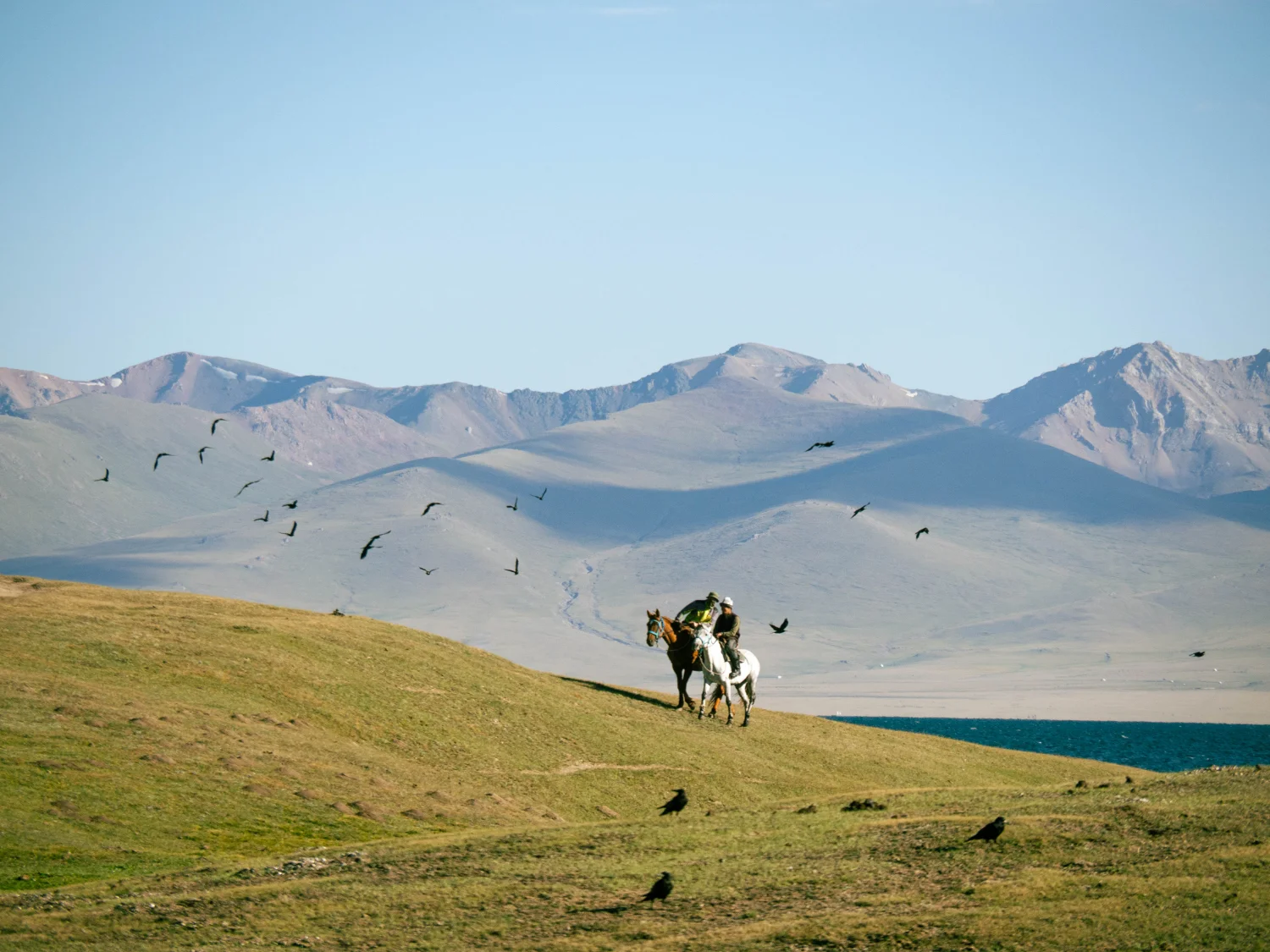
3016m up to Song-Kul
It’s 9am when our driver picked us up in Kochkor (Кочкор), a village located in the valley between the Tian Shan (mountains of heaven) and Pamir mountains of Tajikistan. The streets lead through the valley of Tölök (Төлөк) with incredible views of the mountains and finally going up the Kalmak-Ashuu pass (Калмак ашуу, 3446m). The road is bumpy, the air is dusty but the view unbeatable.
After crossing the pass, the green plateau surrounding Song-Kul Lake (Соңкөл) at 3016m spreads out in front of us.
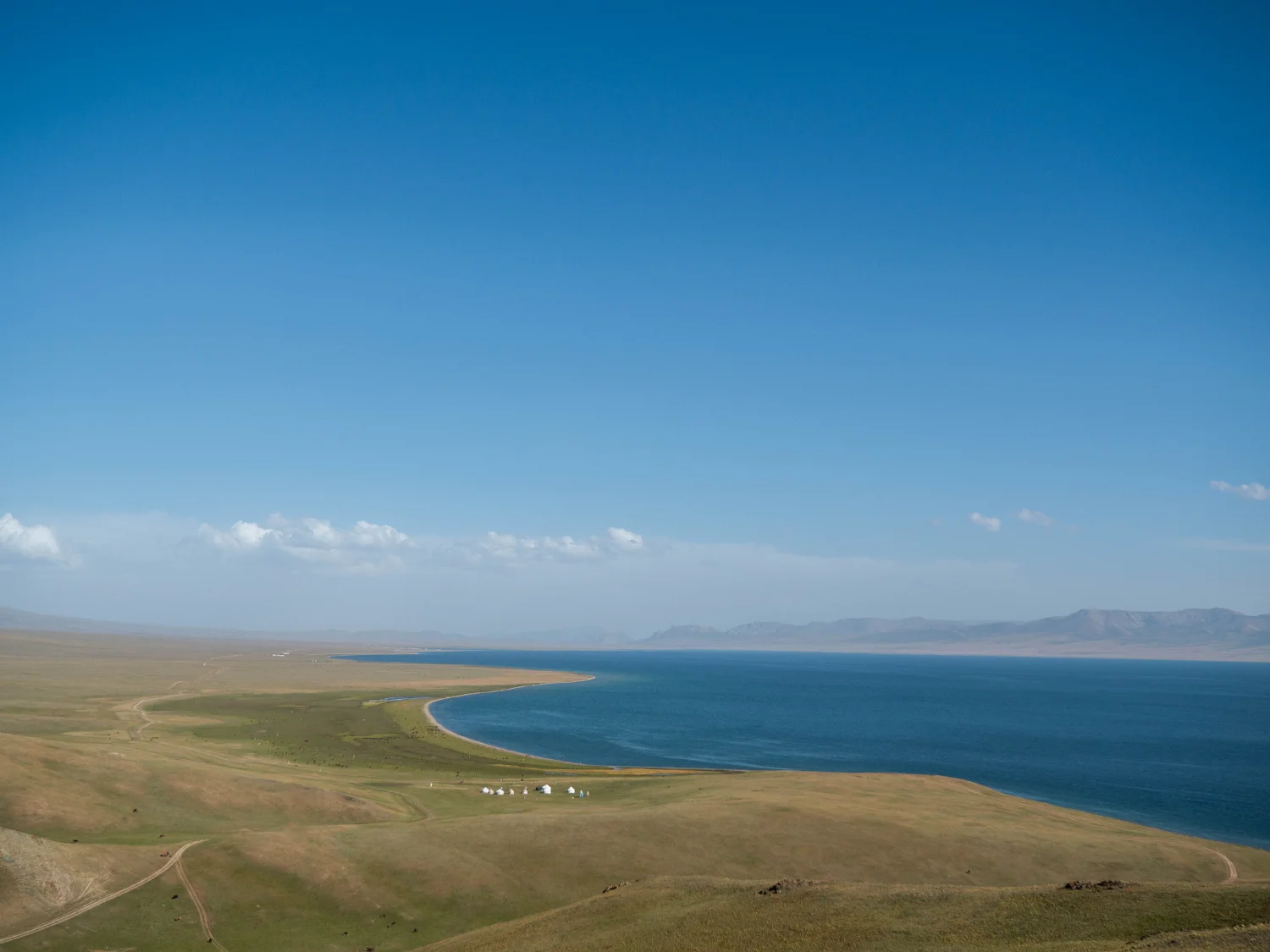
Between horses, cows and sheep
Due to the high altitude, we are above the treeline and therefore only grasses and herbs are growing around the lake. Thousands of horses, cows and sheep are grassing on the wide plain and eventually reaching the alpine freshwater lake to drink.
Song-Kul Lake is Kyrgyzstan’s second biggest lake after Issyk-Kul Lake (Ысык-Көл) that was formed as a result of melting glaciers. Until 1959 there were no fish because of the cold weather conditions, but then they were settled in the lake for breeding.
However, not only animals found their way to Song-Kul. During the summer months nomadic families come to the pastures to settle there for the season. They stay in traditional yurt tents, that are a special construction of a round wooden frame, which is covered with cotton or felt. On top there is the tündük (түндүк), a smoke outlet and exposure window that you open by swinging the rope in a specific way while standing outside.
These yurts are so deeply rooted in Kyrgyz history that the national flag represents the frame of a yurt around the upper tündük. The surrounding rays are symbolic of the 40 united tribes of Kyrgyzstan.
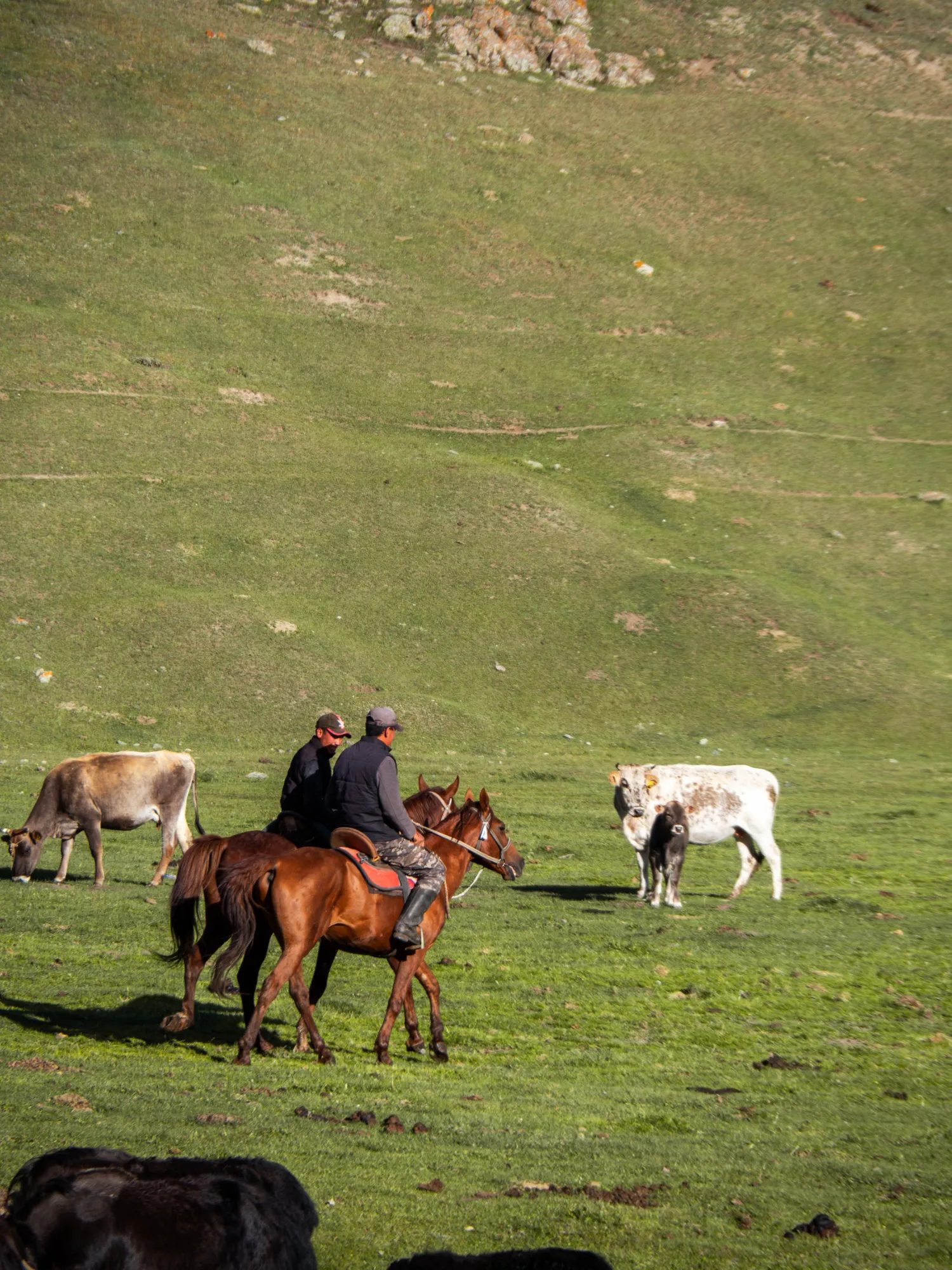
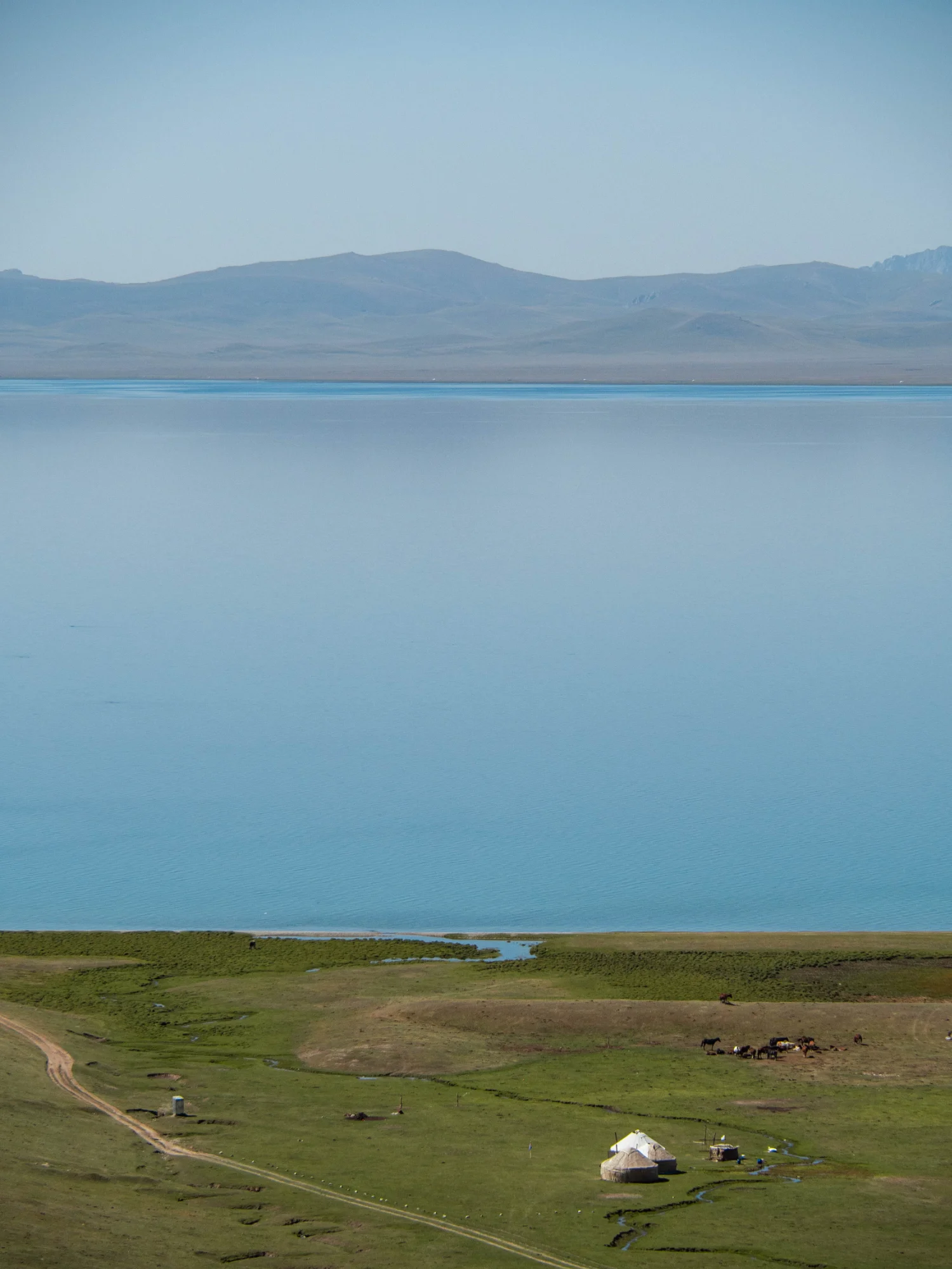
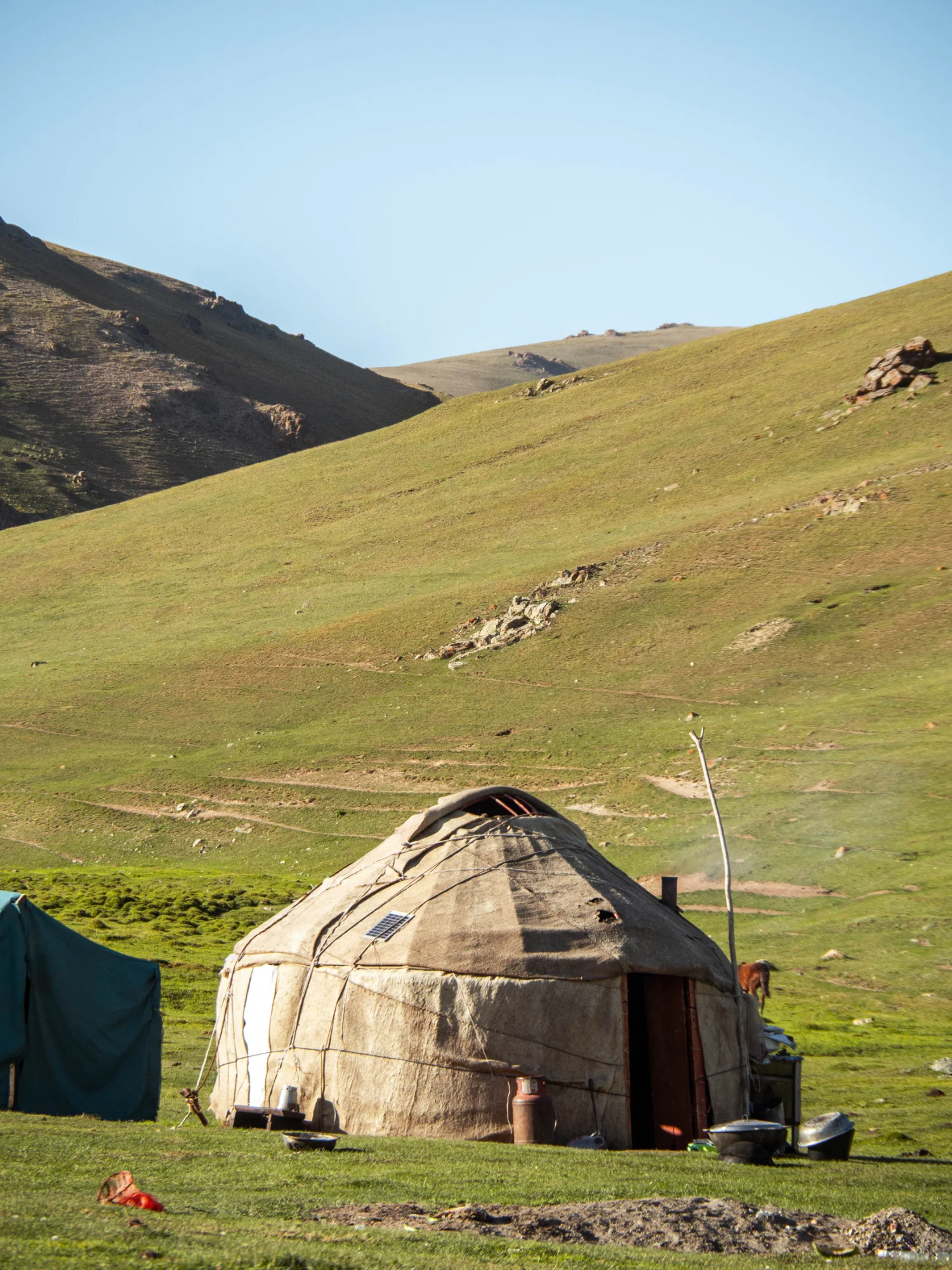
The nomads of Song-Kul
A tent like this was our accommodation for a few nights to experience the nomadic life and nature at the Azamat Yurt Camp. It is located at the beginning of a beautiful valley with a freshwater stream that is surrounded by green hills and dozens of horses, cows and yaks grassing there. The family welcomed us with a warm lunch in their home, where they stay from May to October each year, while living in a house in the village Kyzart (Кызарт) during the winter.
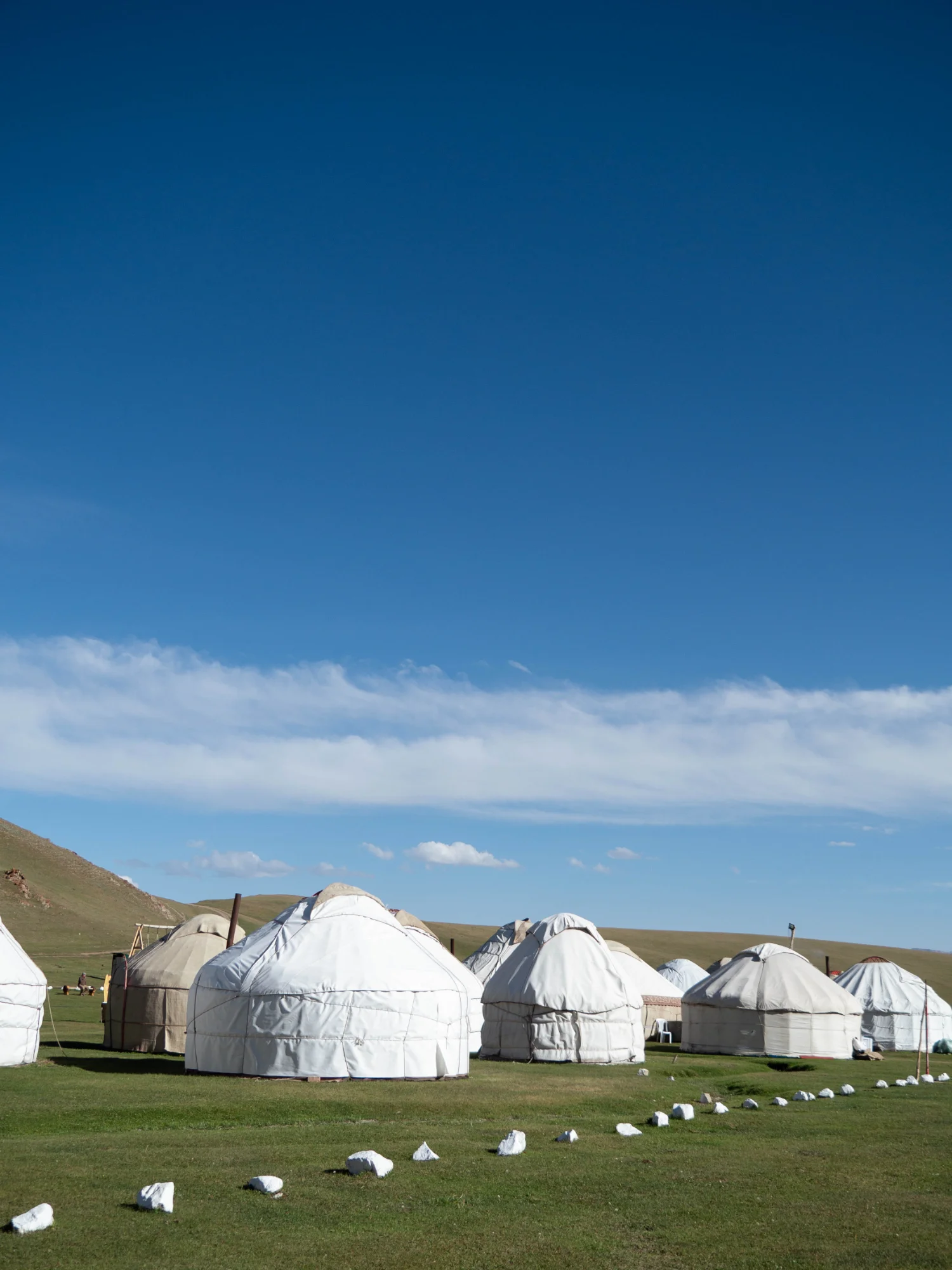
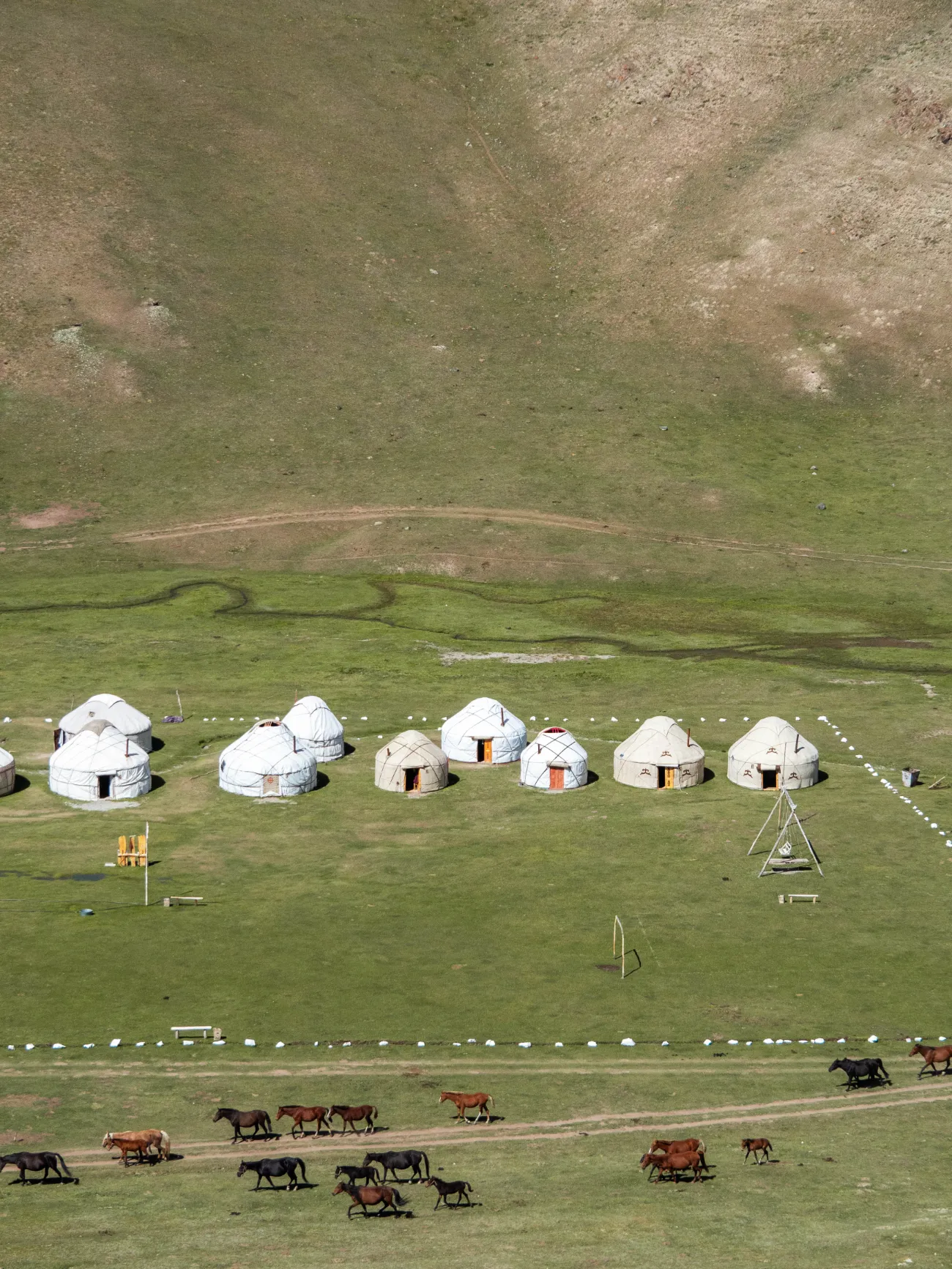
They are so-called semi-nomads since they live a nomadic life only half of the year and are sedentary the other half. The Kyrgyz were nomads for almost 3000 years as it was the best possible way of life to survive in the extreme landscapes of Kyrgyzstan. It is believed that the Kyrgyz have originated in the Mongolian Altai Mountains and mixed with Turkic-speaking people during their migration to Kyrgyzstan.
Before the Soviet Union, nomadic life was an integral part of the Kyrgyz people, and they roamed the steppes and mountains of Central Asia with their animals. During collectivization, compulsive attempts were made to drive out this nomadism through bans and persecution and to turn them into sedentary farmers and workers, yet they never truly eliminated the nomadism.
Horses and their role for nomads
Horses and horse breeding, as well as the semi-nomads still play a central role in Kyrgyz culture. They are in fact absolute experts in mastering their horses, that are a specific Kyrgyz breed of horse since they are smaller and therefore more agile when wandering through the mountains.
During the communism this breed was almost extinct, but the nomads were hiding their horses in the mountains – luckily. The semi-nomads of our camp own about 40 horses and chose Song-Kul Lake as their summer base due to the good conditions for their animals.
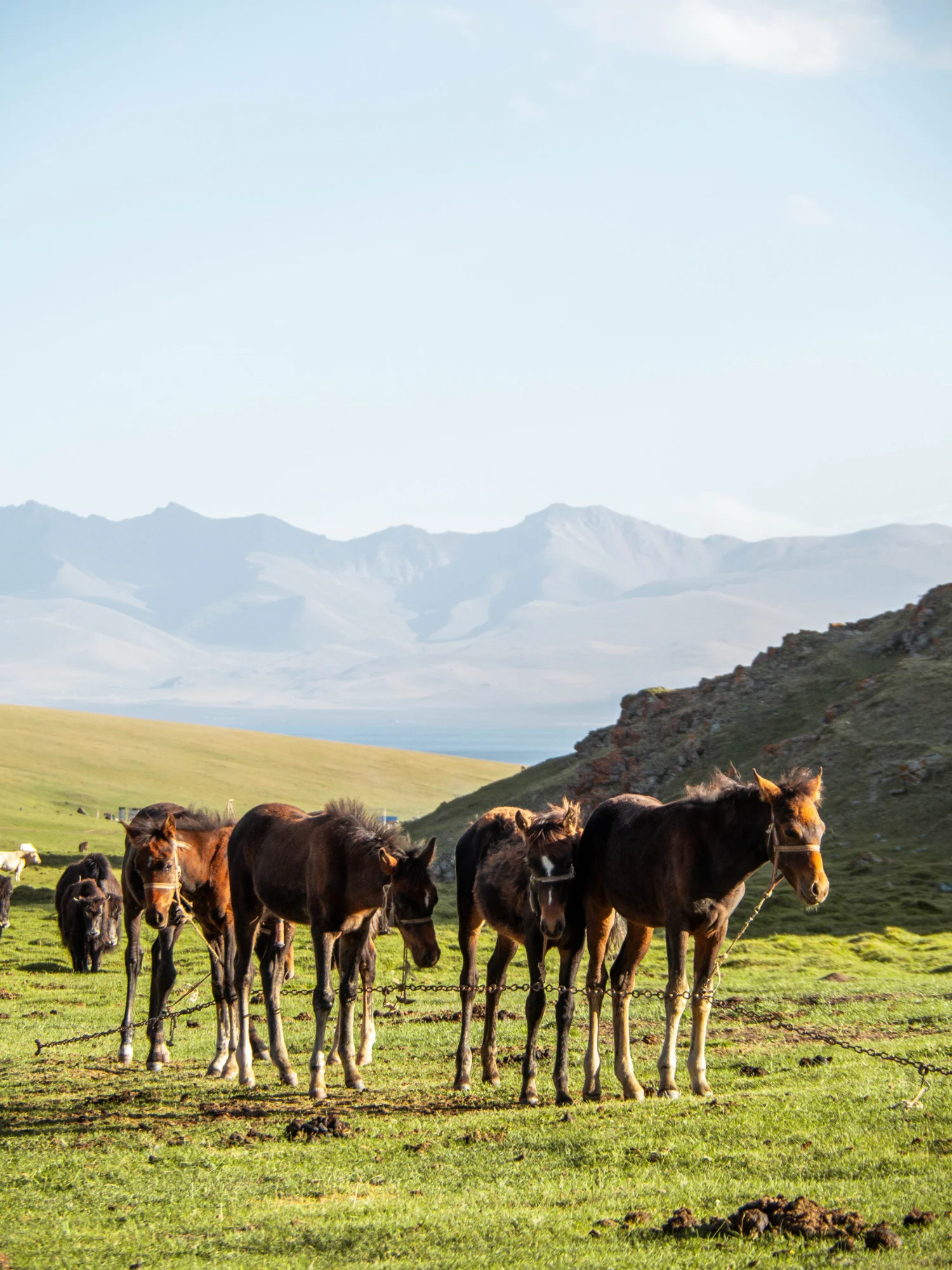
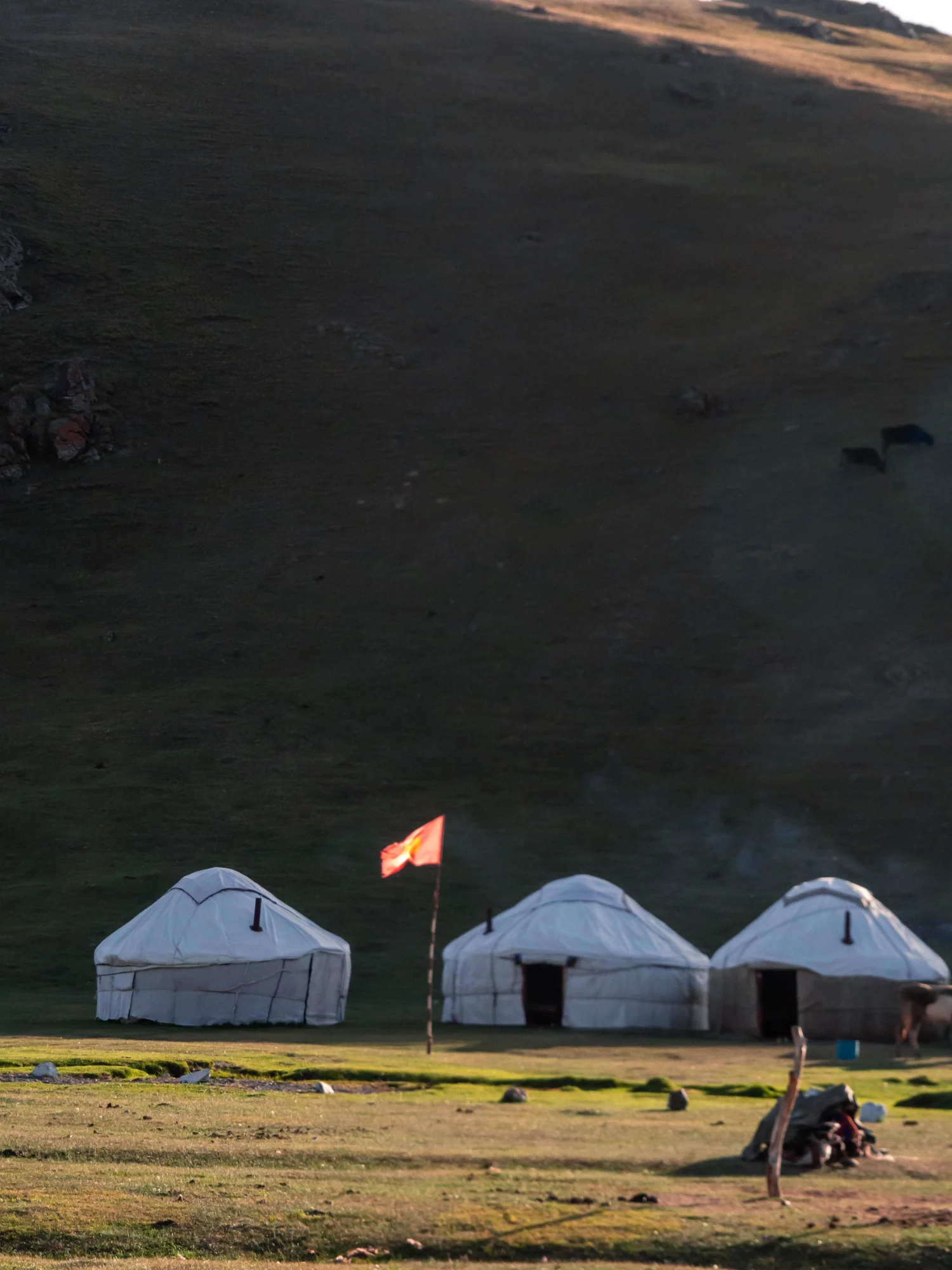
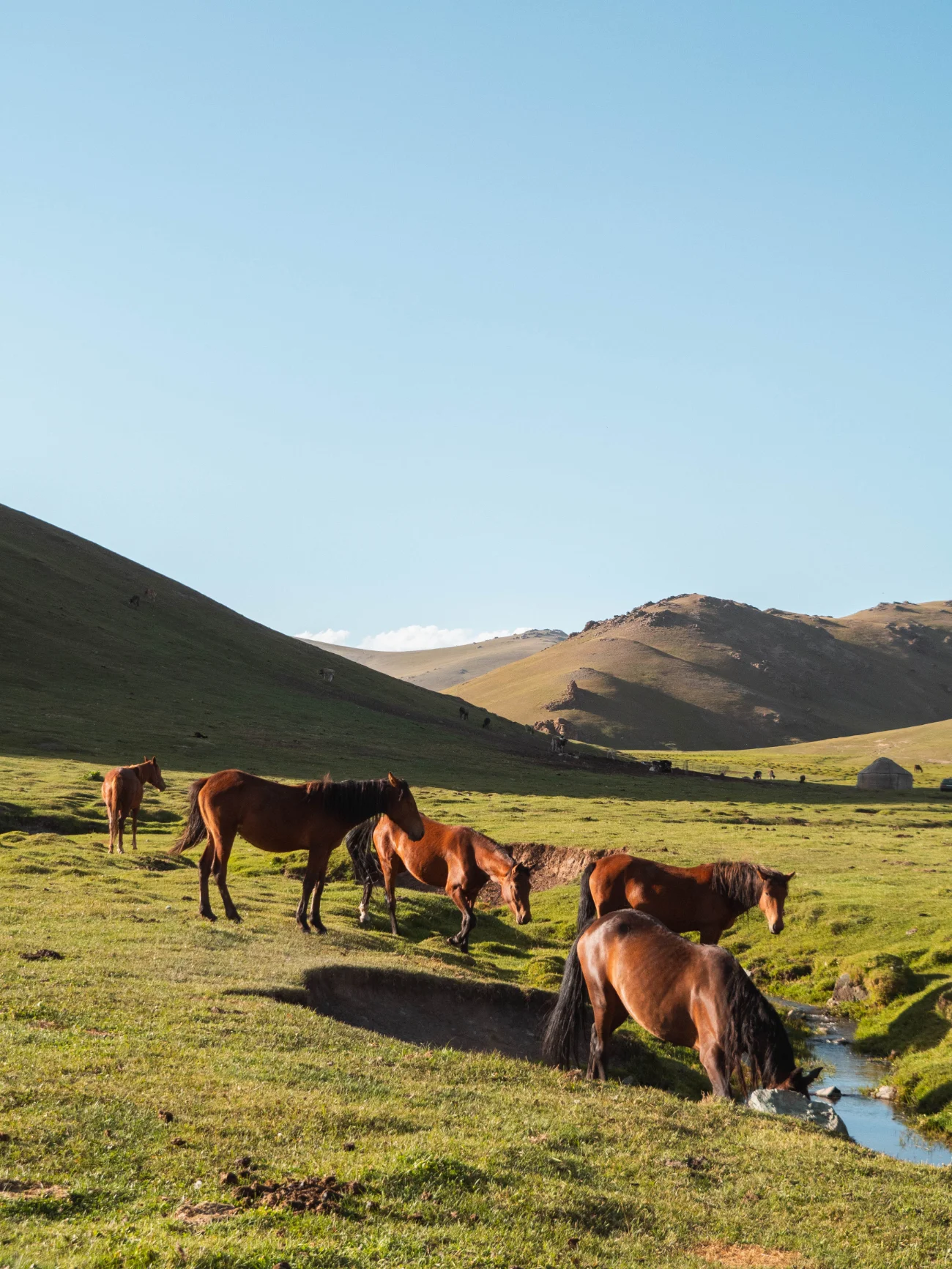
When walking along Song-Kul Lake we had the chance to experience the horses together with the local nomads firsthand. A herd of horses with their nomadic leader passed by and with a “Salam!” (= hello) together with a hand movement they signalized us to follow them to the shore of the lake.
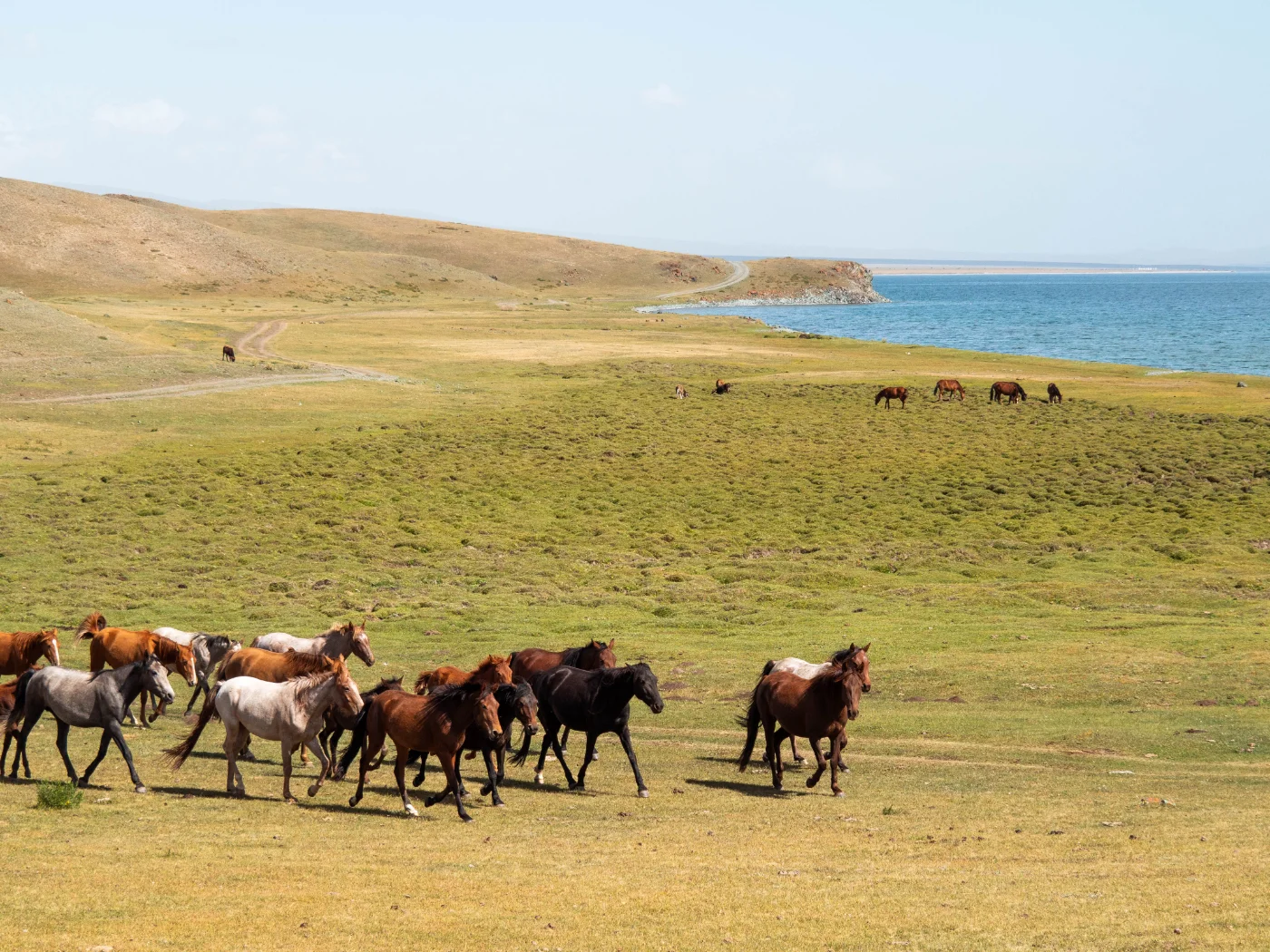
Not knowing what to expect we didn’t hesitate and were rewarded with an unbelievable scene. The nomad on the leading horse took the horses in the middle of a rocky beach – Song-Kul Lake on one side and another smaller pond on the other.
They started moving the horses around in circles and even into the lake and while it looked impressive, we were still unsure of the purpose. With the lack of Kyrgyz or Russian knowledge we were unable to ask but soon figured out the reason.
Every now and then, they separated one of the horses from the rest of the herd to tie together the front legs. This continued until every horse had its legs tied up. Since the horses are roaming freely around the Song-Kul Lake the nomads use the rope to make sure they can’t run away too far from the yurt camp.
Staying with the nomads of Song-Kul was an unforgettable experience, and taking a closer look the nomadic history of the country as well as soaking up the beautiful landscape has been a true highlight of Kyrgyzstan.
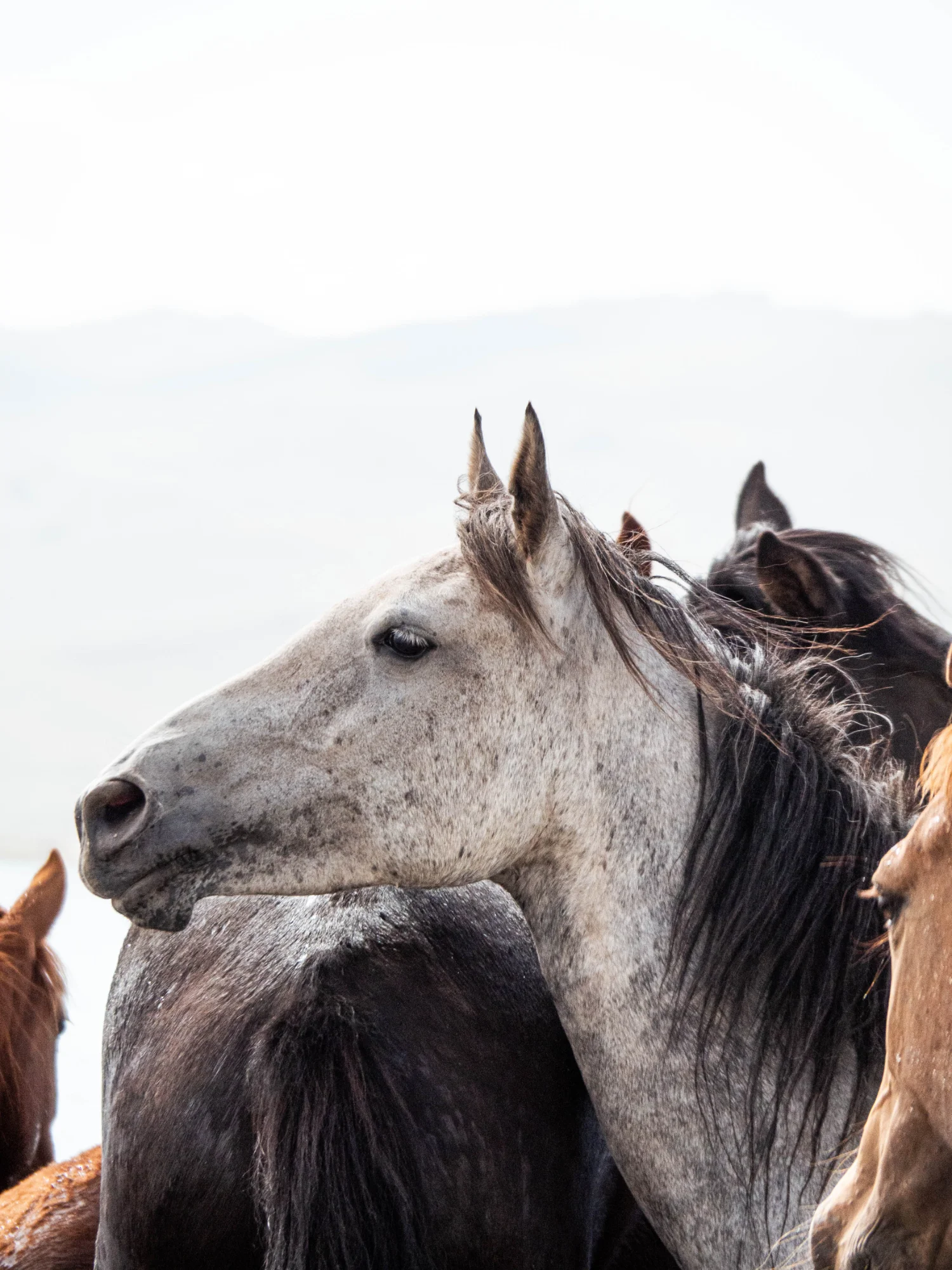
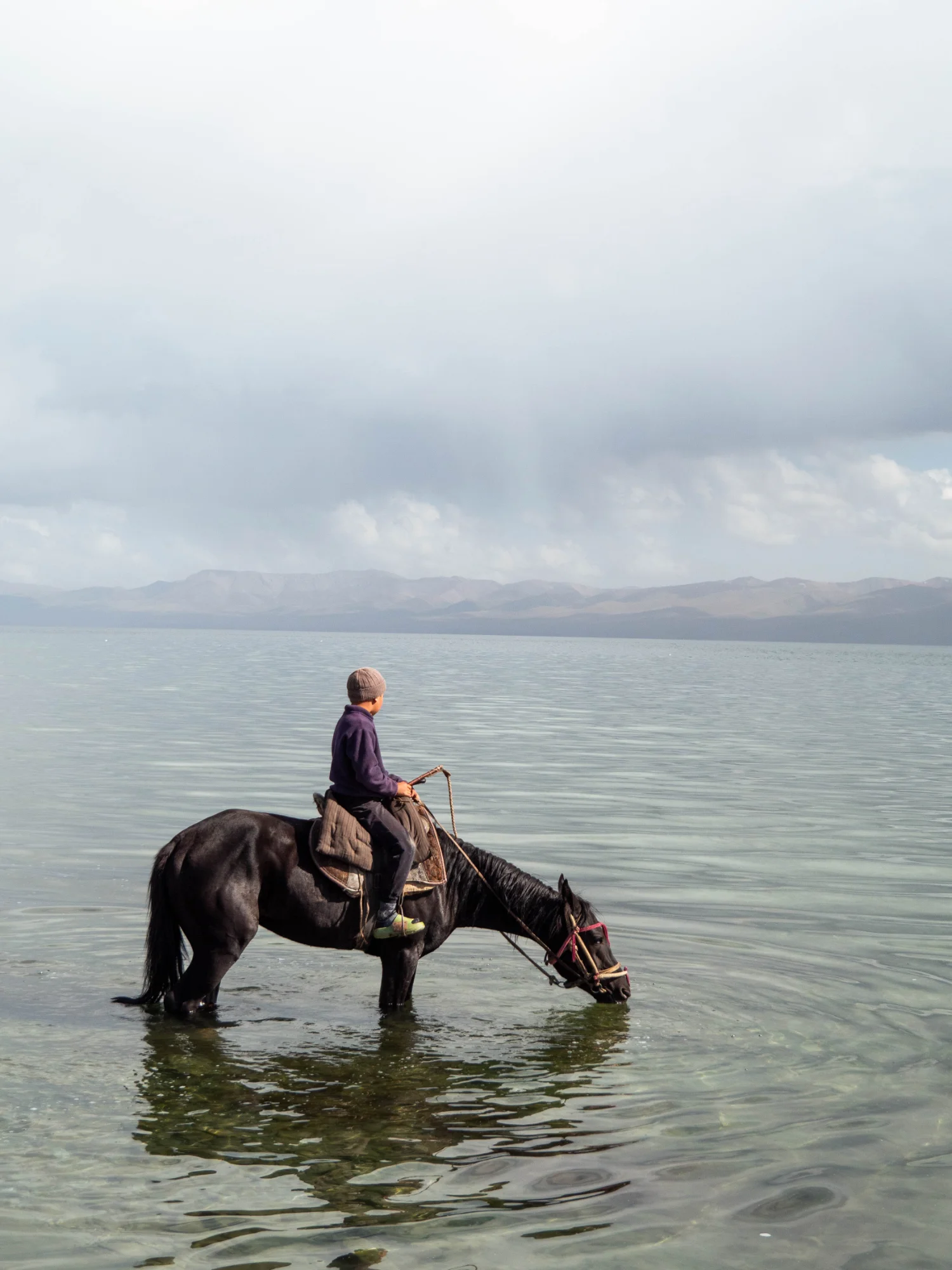
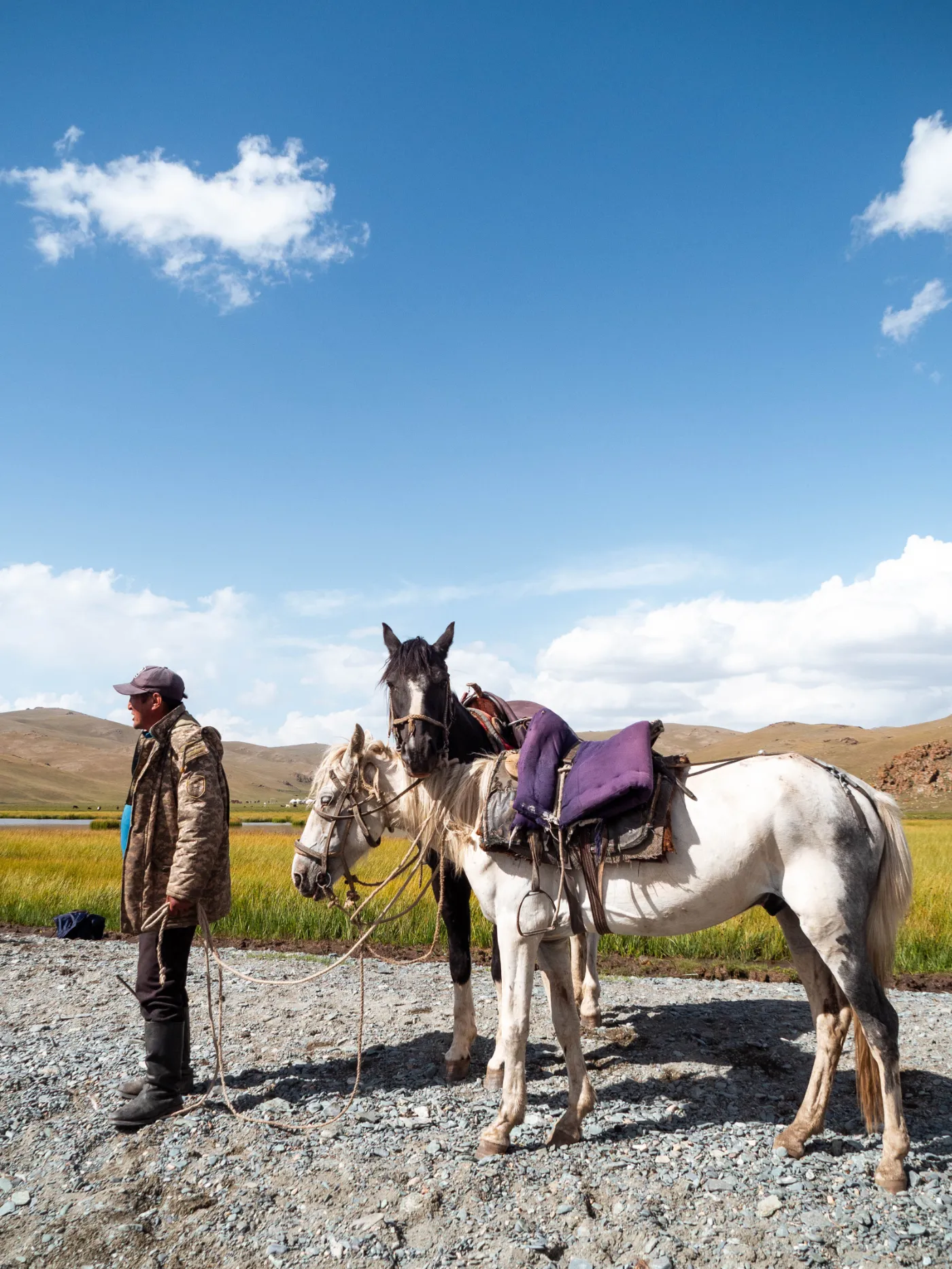


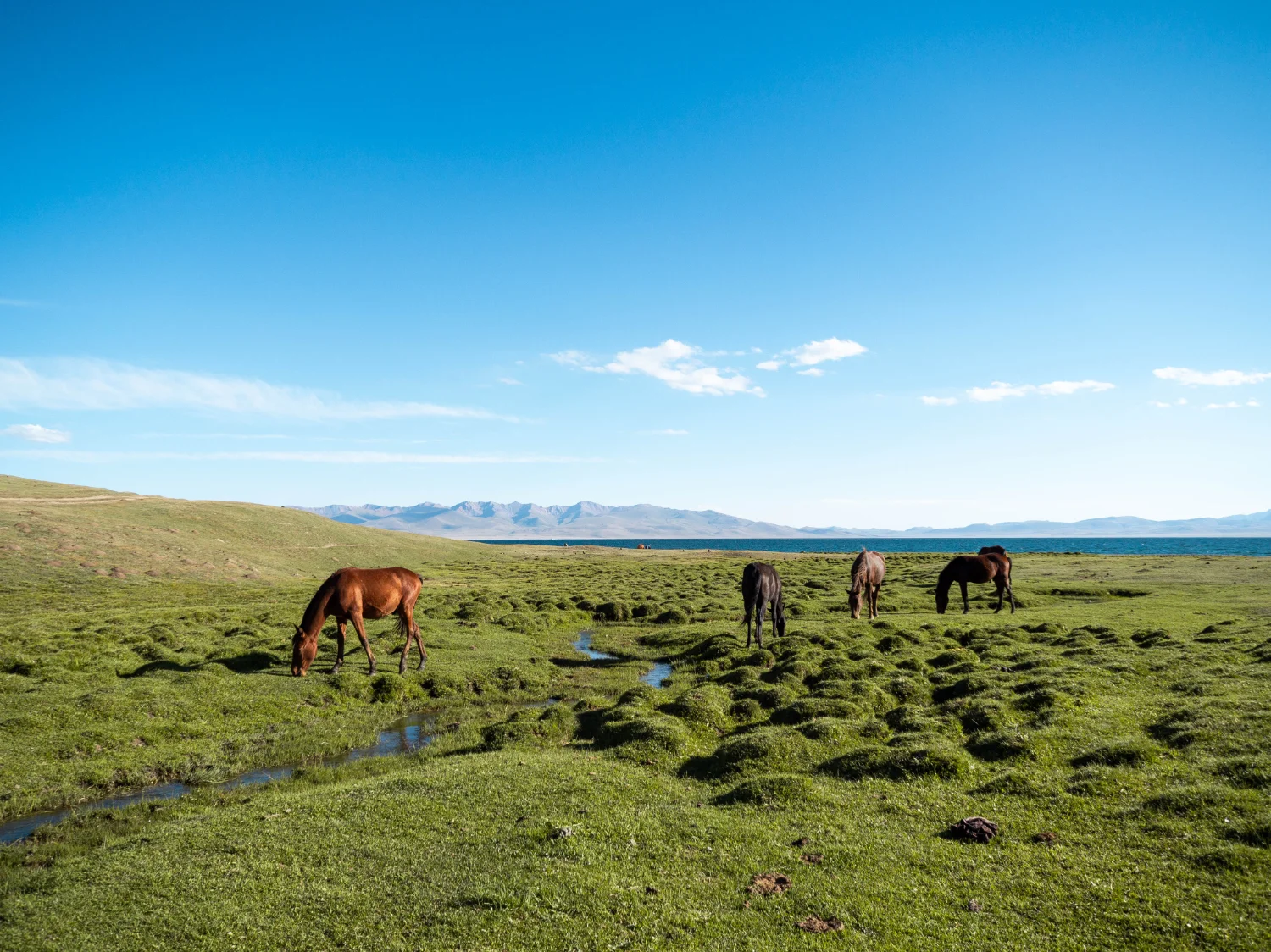
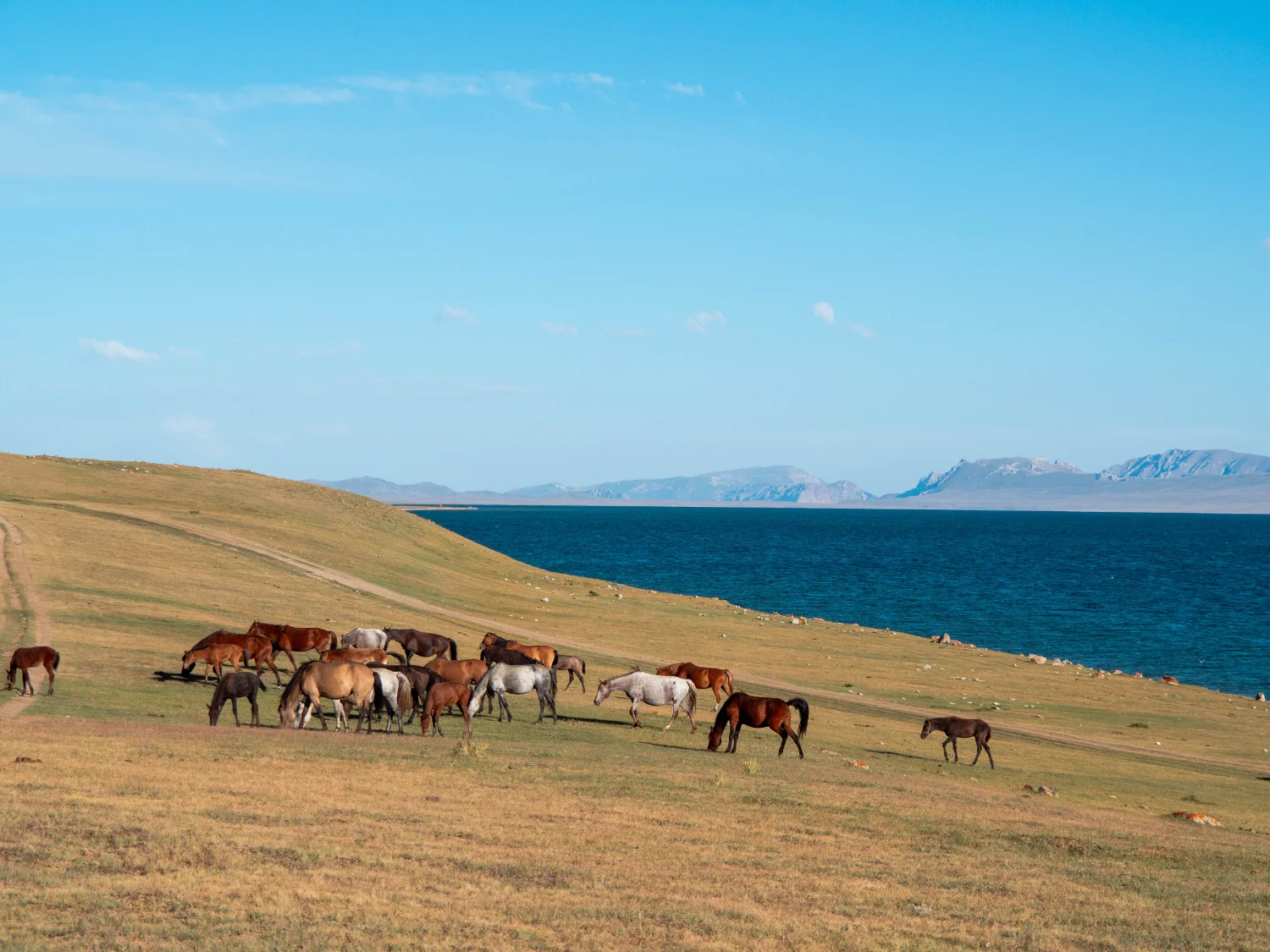
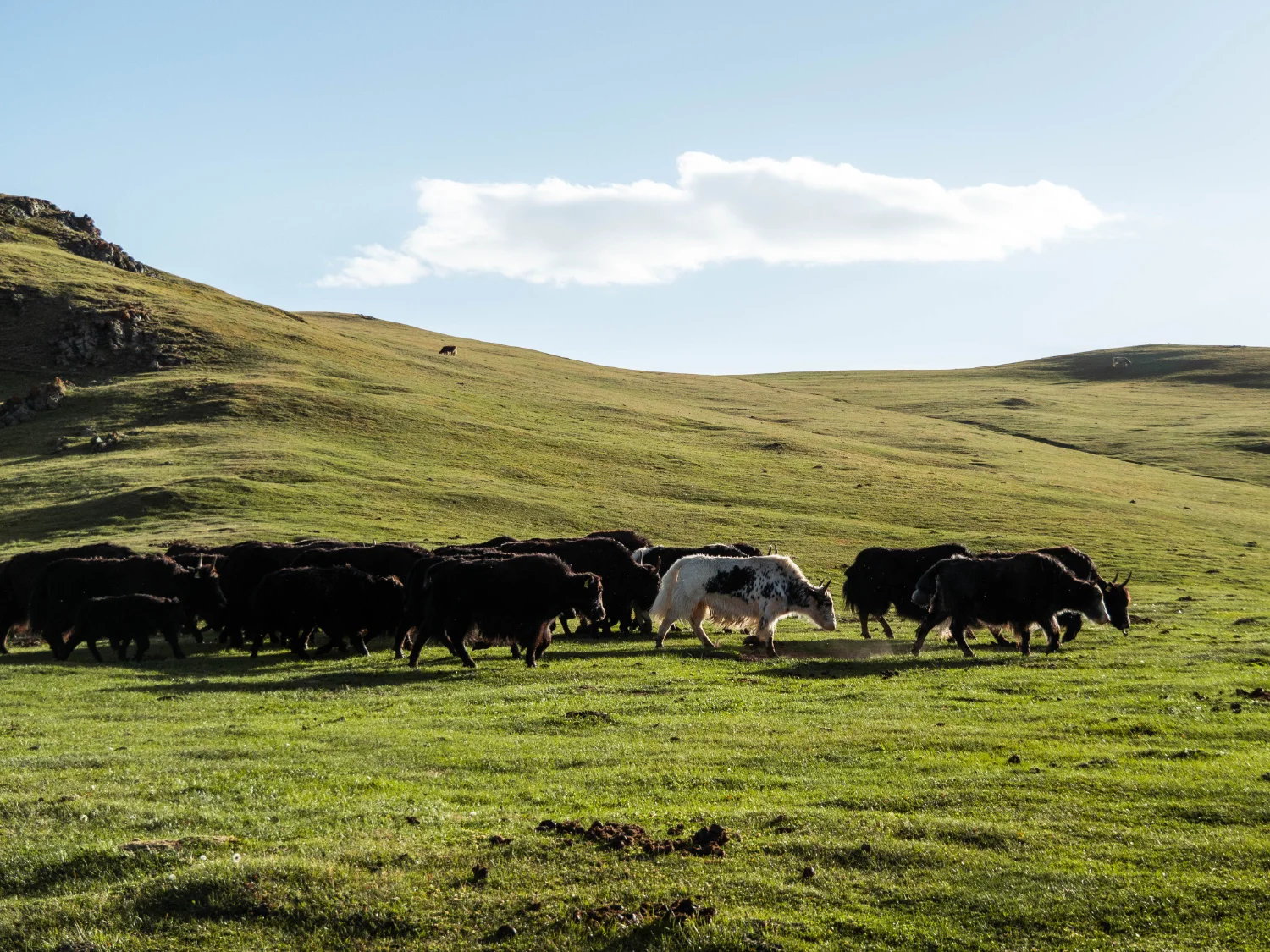
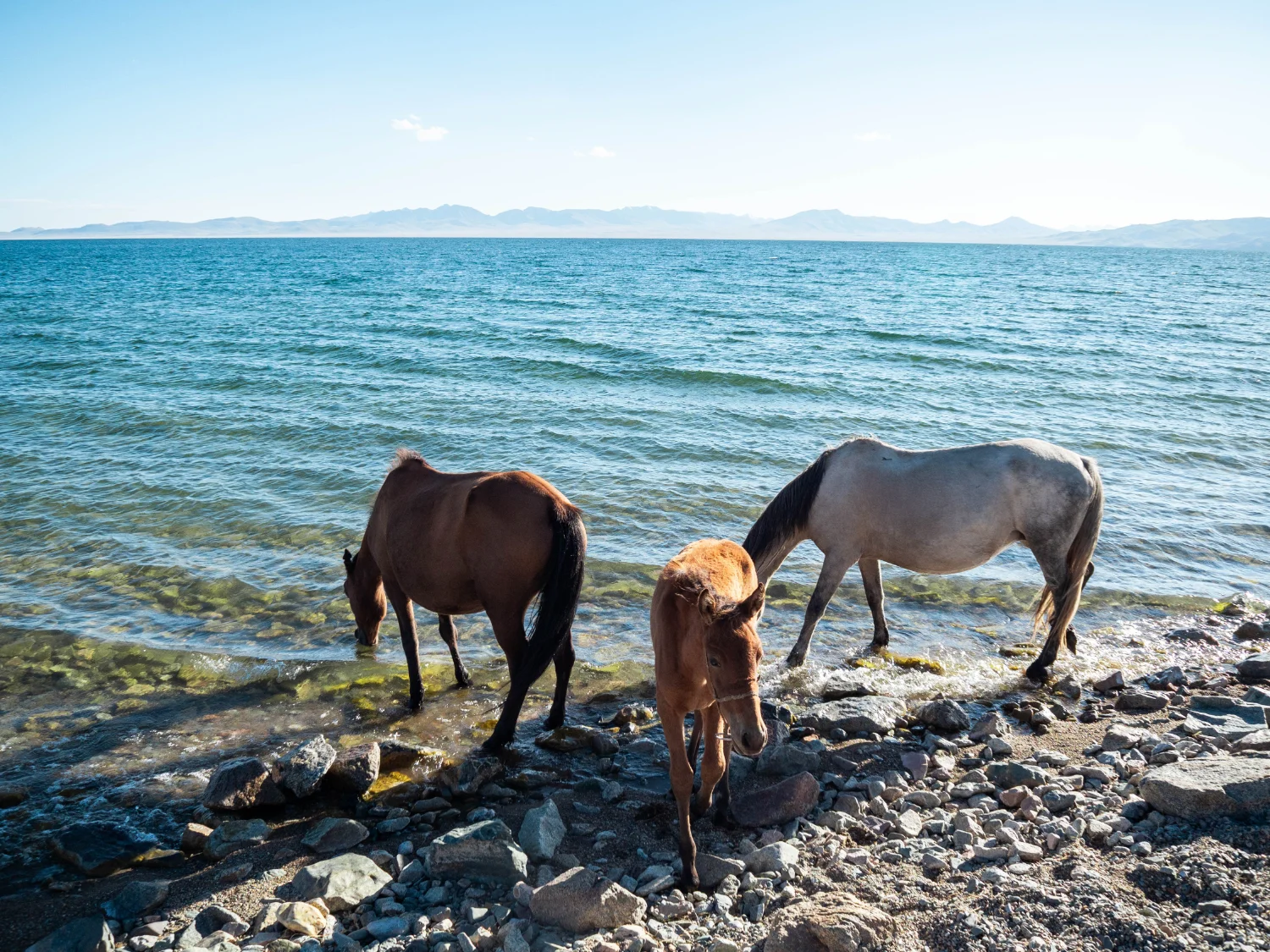
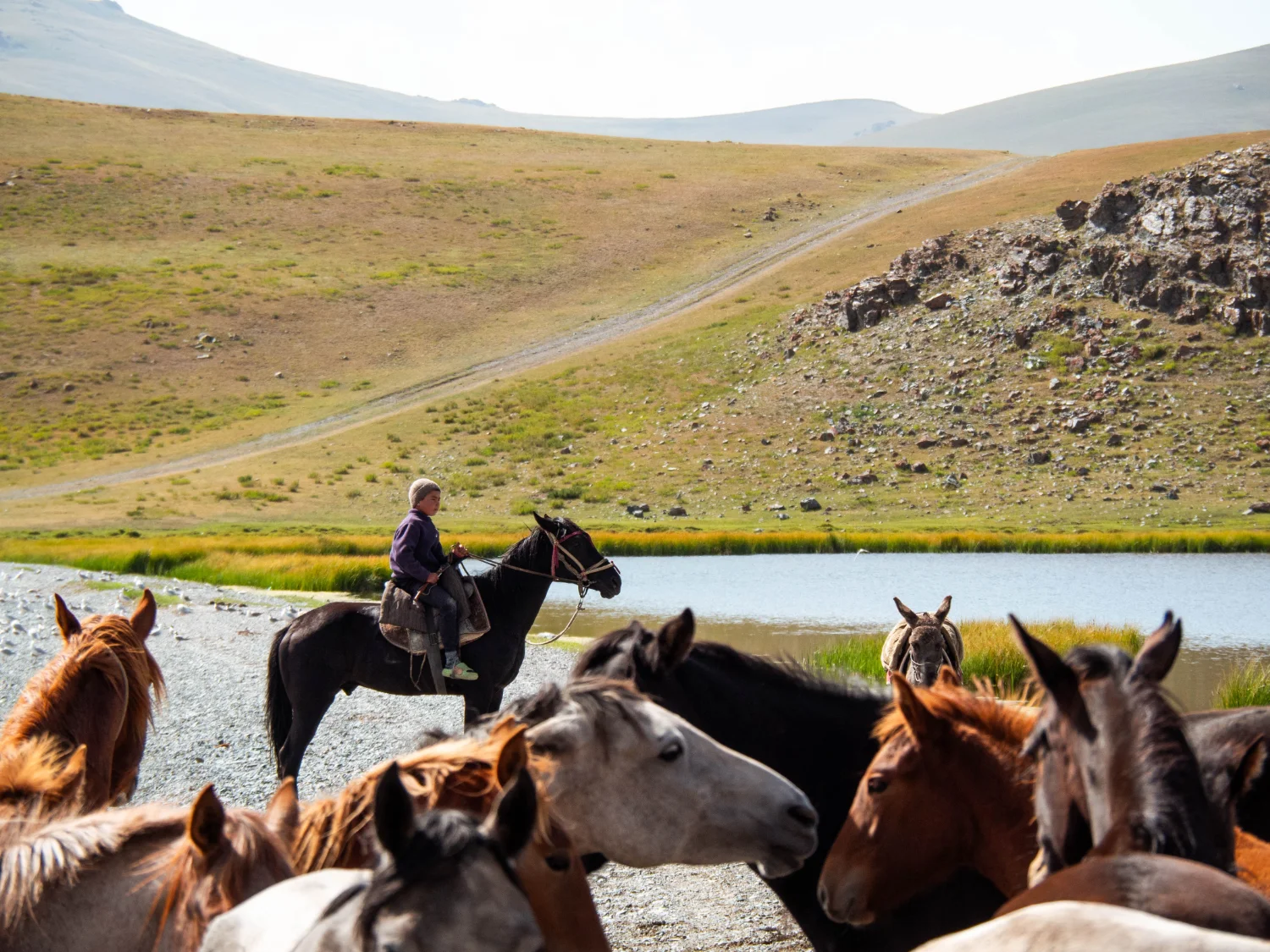
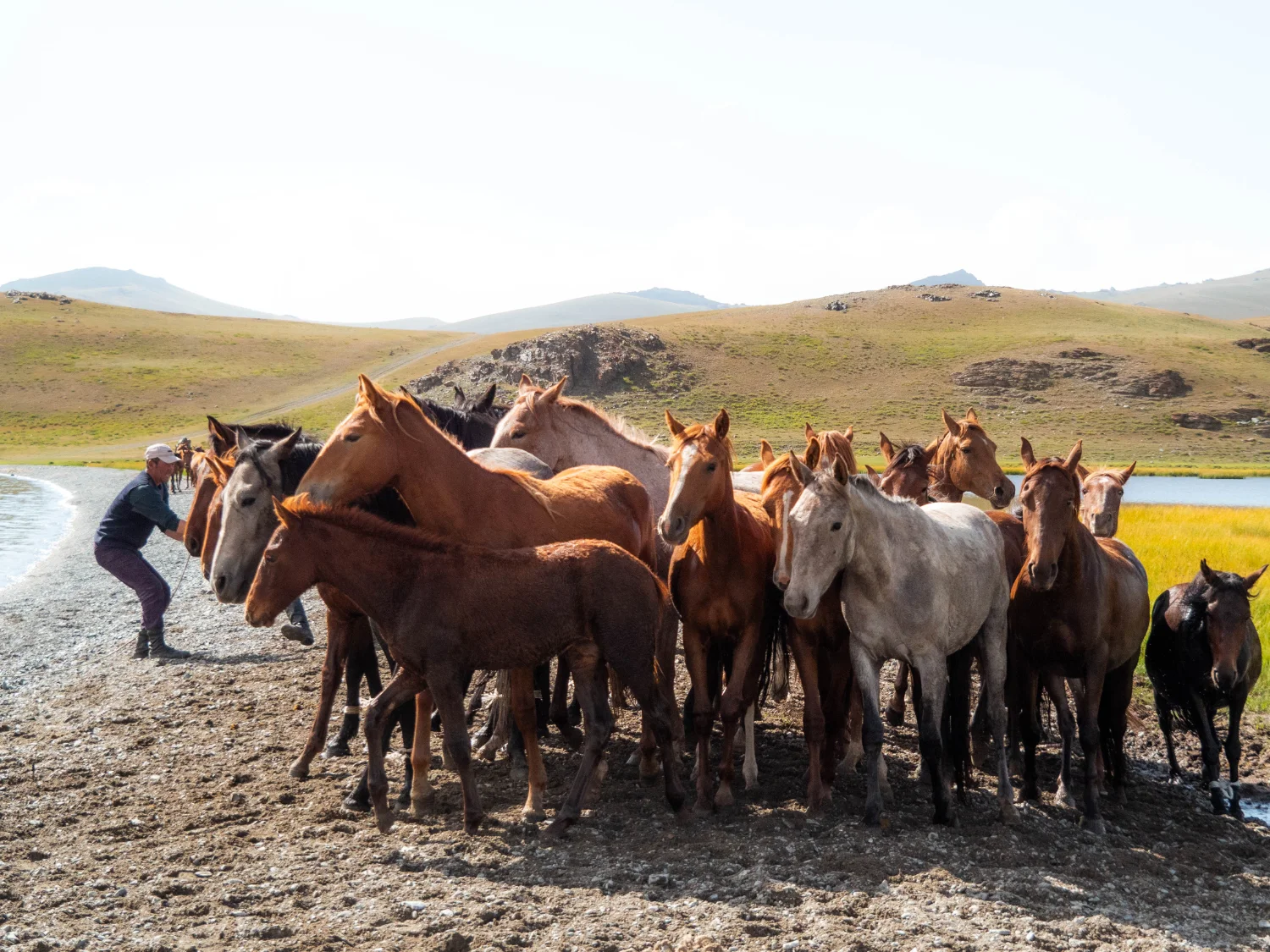
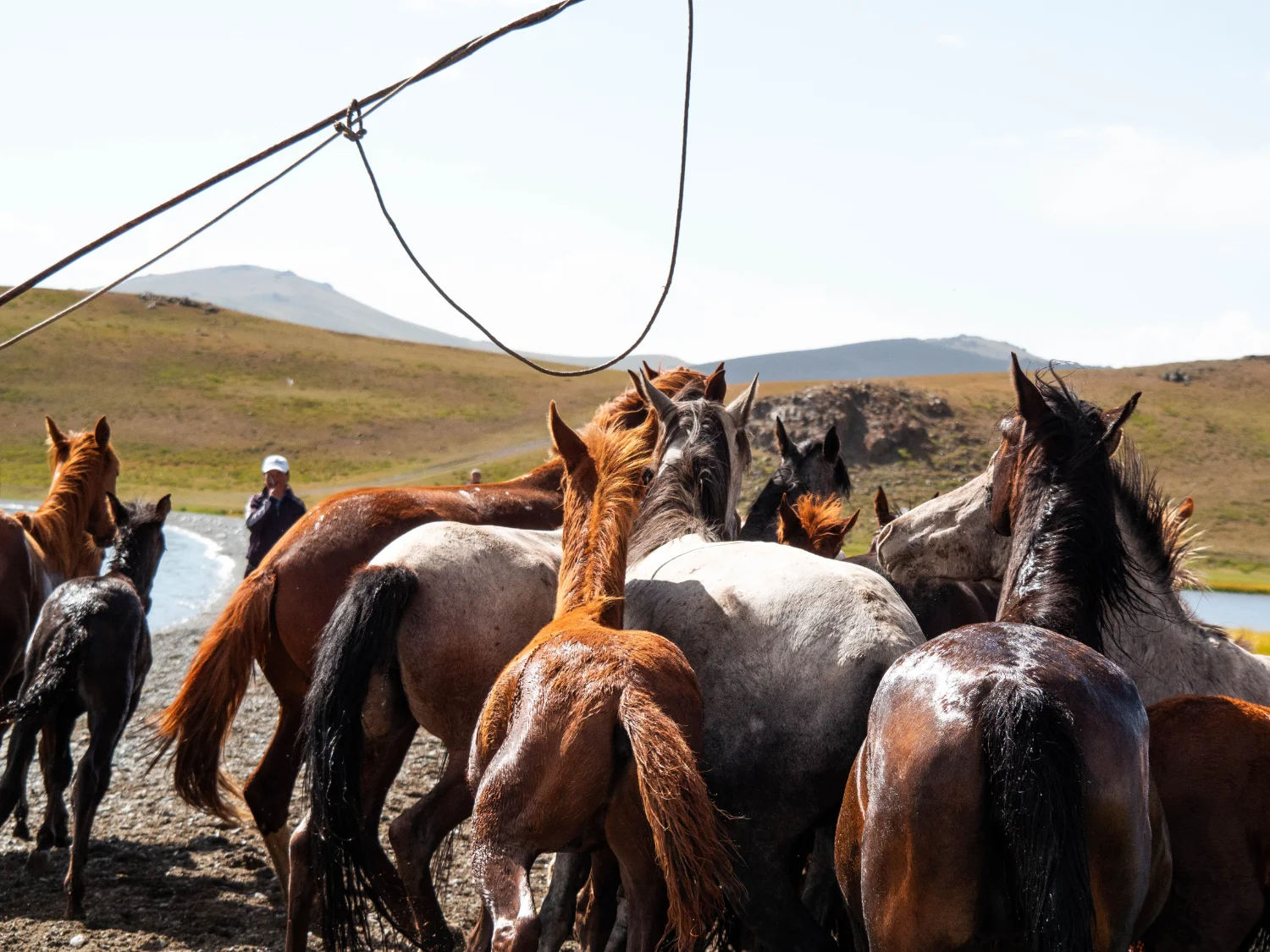
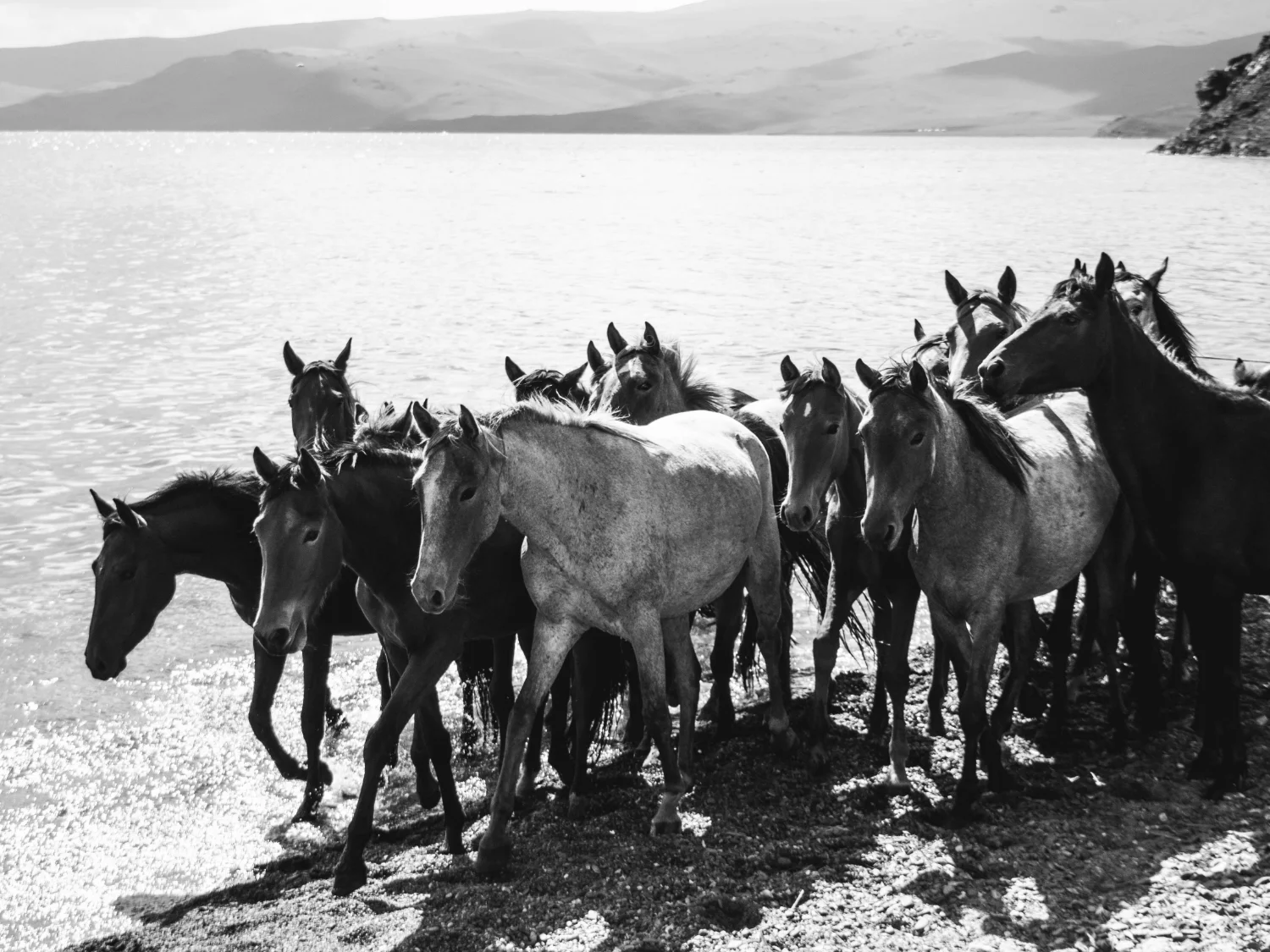



No comment